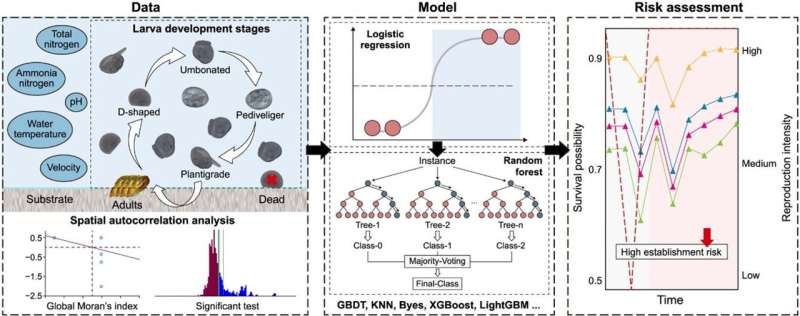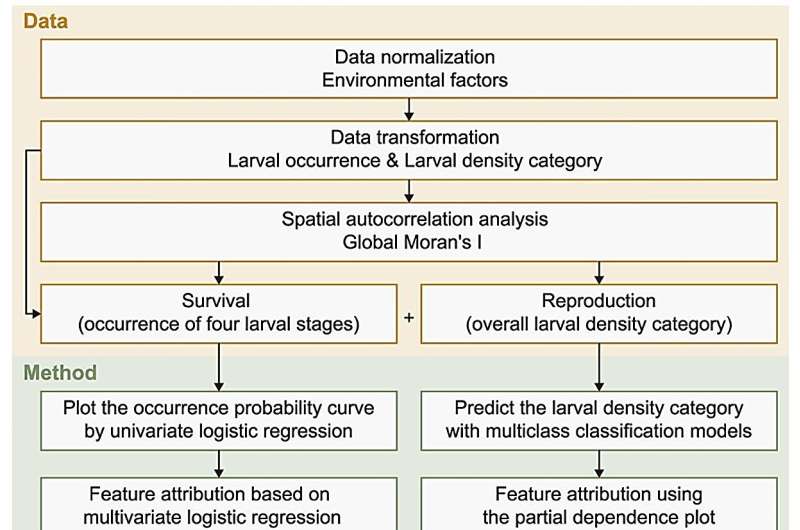This article has been reviewed according to Science X's editorial process and policies. Editors have highlighted the following attributes while ensuring the content's credibility:
fact-checked
proofread
A new analytical framework assesses the risk of invasive golden mussels in water diversion projects

Water diversion projects, though meant to correct unequal water distribution, unintentionally promote the growth of invasive aquatic species like the golden mussel. This fast-reproducing, substrate-clinging mussel causes biofouling, damaging structures and water quality, and leading to socio-economic and ecological issues. Yet, how environmental factors aid this colonization remains largely unclear, necessitating further research.
In a study published in the journal Environmental Science and Ecotechnology, researchers from Tsinghua University, utilized logistic regression and multiclass classification models to shed light on the environmental influence on the golden mussel's occurrence probability and reproductive density.
This investigative endeavor pinpointed key environmental variables such as total nitrogen, ammonia nitrogen, water temperature, pH, and velocity that pose substantial biofouling risks. The study divulged that elevated total nitrogen levels curtail mussel reproduction, whereas optimal water temperature fosters their reproductive prowess.
Furthermore, ideal velocity and pH levels emerged as paramount for maintaining moderate larval density, with ammonia nitrogen and total nitrogen demonstrating a negative correlation with the occurrence probability across all larval stages, underscoring their bearing on larval survival. This research introduces an innovative, quantifiable framework for evaluating the establishment risks linked to invasive mussels.

This novel methodology interweaves logistic regression to ascertain larval occurrence probability and multiclass classification models to prognosticate the overall larval density category. Through the vigilant monitoring of pivotal environmental variables, this approach enables swift, cost-effective risk assessment, thereby bolstering the prevention and management of golden mussel biofouling.
The implications of these findings extend beyond China, resonating with over 200 water diversion projects globally. The proactive application and continual monitoring of this newly minted model could drastically enhance invasive species management within water diversion initiatives, thereby mitigating the detrimental impact of biofouling on our water systems and infrastructure.
This study significantly advances our understanding of the relationship between environmental factors and invasive species, equipping us with the vital tools needed to manage and mitigate the deleterious effects of biofouling in large-scale water projects. The research team is optimistic that the insights unearthed through this investigation will pave the way for the development of more efficacious strategies to combat the proliferation of golden mussels and other invasive species on a global scale.
More information: Yao Yang et al, Establishment risk of invasive golden mussel in a water diversion project: An assessment framework, Environmental Science and Ecotechnology (2023). DOI: 10.1016/j.ese.2023.100305
Provided by Chinese Society for Environmental Sciences

















